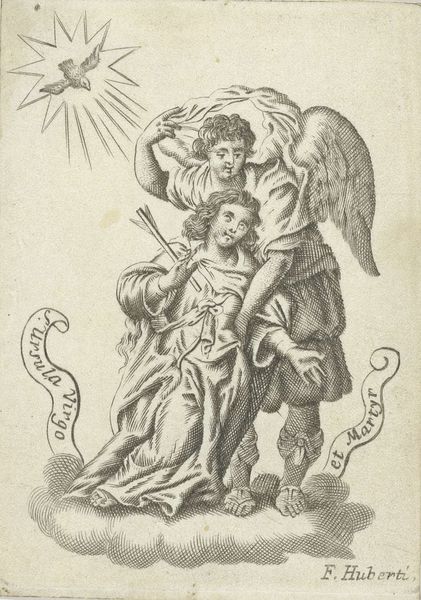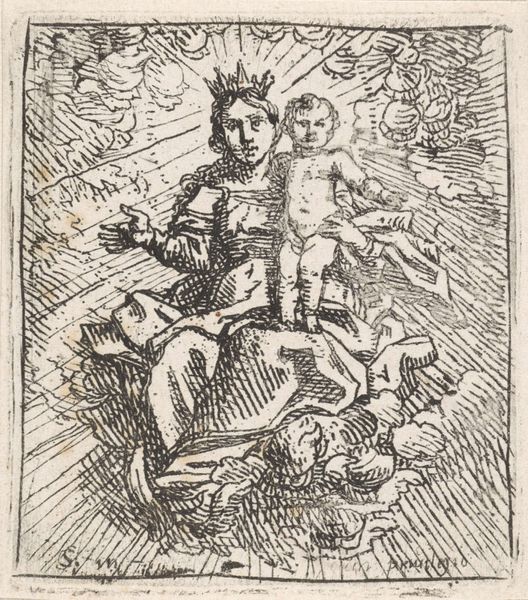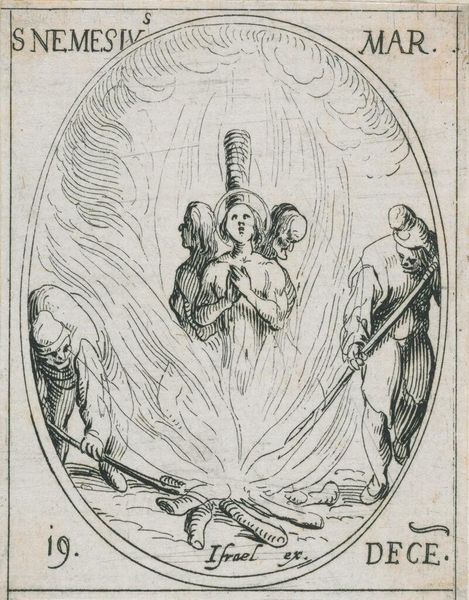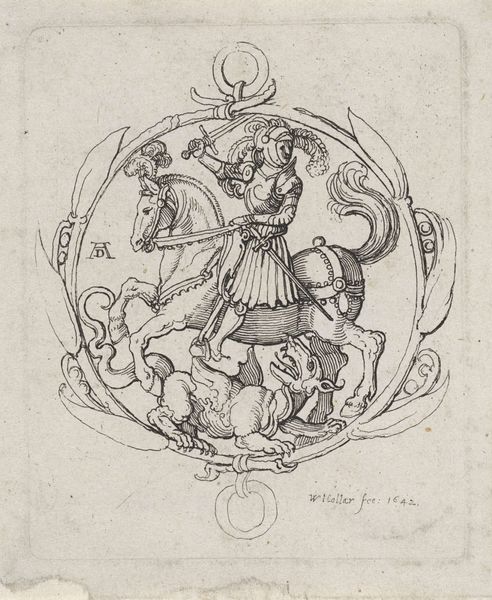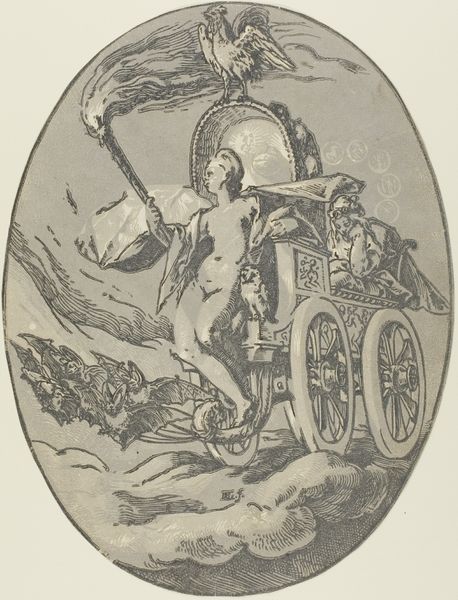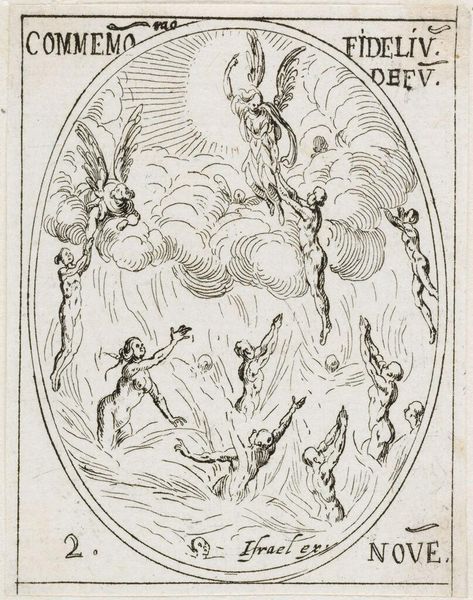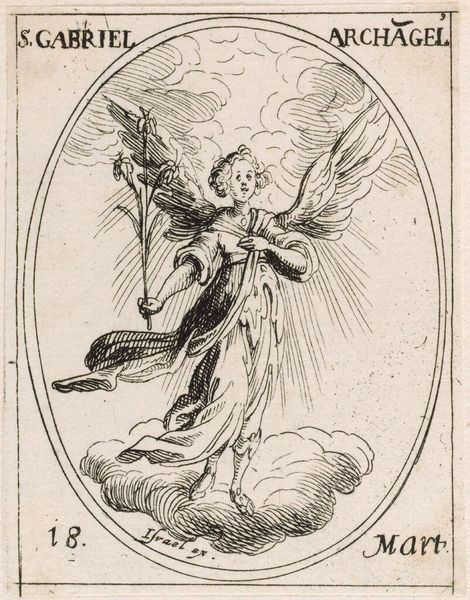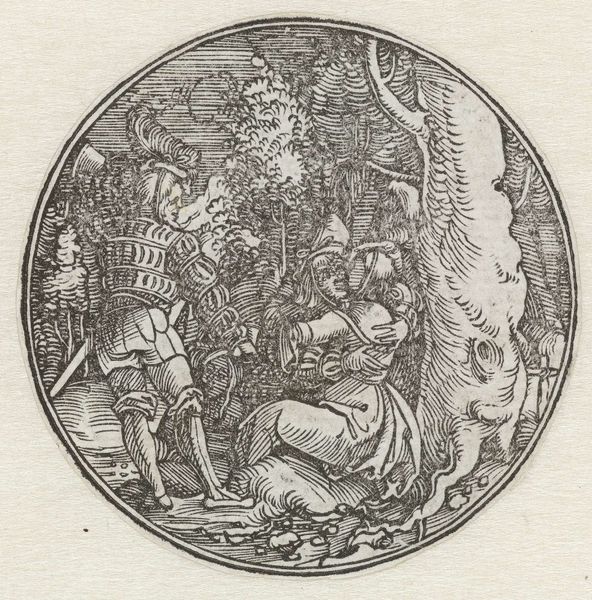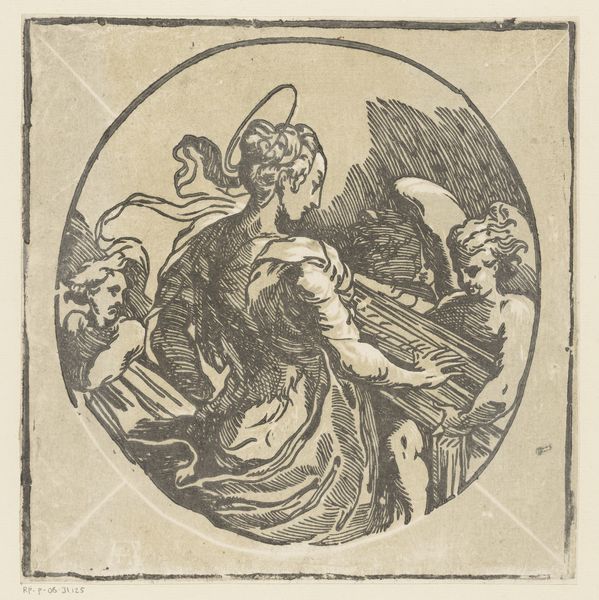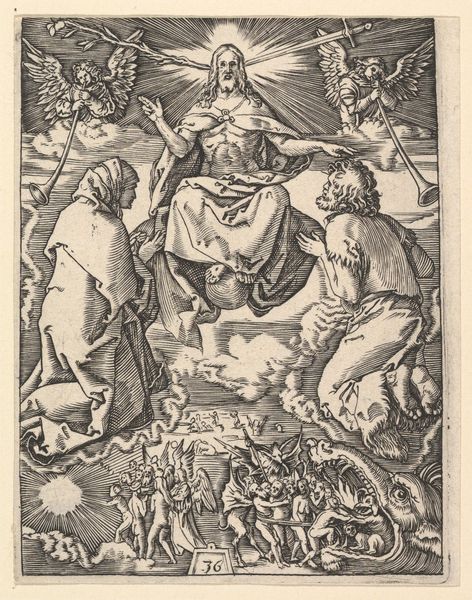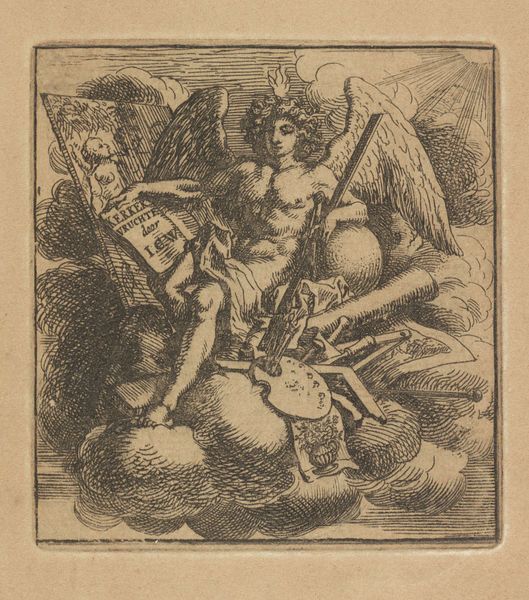
drawing, paper, ink, engraving
#
drawing
#
baroque
#
pen sketch
#
old engraving style
#
figuration
#
paper
#
ink
#
history-painting
#
engraving
Dimensions: height 89 mm, width 64 mm
Copyright: Rijks Museum: Open Domain
Curator: Looking at Cornelis Schut's "H. Michaël," which dates roughly from 1618 to 1655, and is currently housed in the Rijksmuseum, what strikes you initially? Editor: Well, it has a raw energy! The etching is like a bolt of divine fury captured in ink. The swirling lines, they practically vibrate. It's chaotic and kind of… thrilling. Curator: Indeed! Schut was working within a Baroque aesthetic, and this ink drawing certainly showcases its dynamism. The figure of Michael vanquishing what appears to be a fallen figure is powerful. Considering the historical backdrop of religious and political strife, how might this image resonate with its original audience? Editor: You're right, the historical context is crucial here. This rendering could be seen as a potent symbol of triumph of the spiritual—or moral—good. Michael’s pose is triumphant, he literally casts down his opponent with ease, without violence—it’s about presence and grace. Maybe, if we stretch a bit, about divine order overcoming the chaos of the mundane. Curator: Precisely. Baroque art often functioned as a tool for ideological reinforcement, and the depiction of Michael, a prominent figure in both religious and secular narratives, underscores notions of divine authority and righteousness. How do you perceive the relationship between the divine and the terrestrial within the work? Editor: Good point— the halo isn’t quite as definitive as you'd think. It's suggested more than proclaimed. What's interesting to me is the lack of stark light-dark contrast. There's a softness even within this powerful scene, like a dawn breaking through turbulent clouds. Does that connect with wider considerations about power in the seventeenth century, do you think? Curator: Certainly! We can see this softness you describe as part of a broader negotiation of power dynamics. Even within expressions of authority, there's an attempt to temper and refine the messaging. Looking closer we can discern the oval frame to highlight Michael’s body in a way that adds to the engraving a softer, gentler and yet imposing attitude. This adds nuance to the understanding and position of this kind of piece and also tells us about possible costumer profiles within that era. Editor: It's a potent reminder that art is always speaking to its present. These old artworks, sometimes, whisper something new each time you observe them, and, certainly, tell a lot about our past and the path that shaped present. Curator: Absolutely, this close look into the technique and the context allows us to view old narratives under our contemporary gaze. Thank you!
Comments
No comments
Be the first to comment and join the conversation on the ultimate creative platform.
